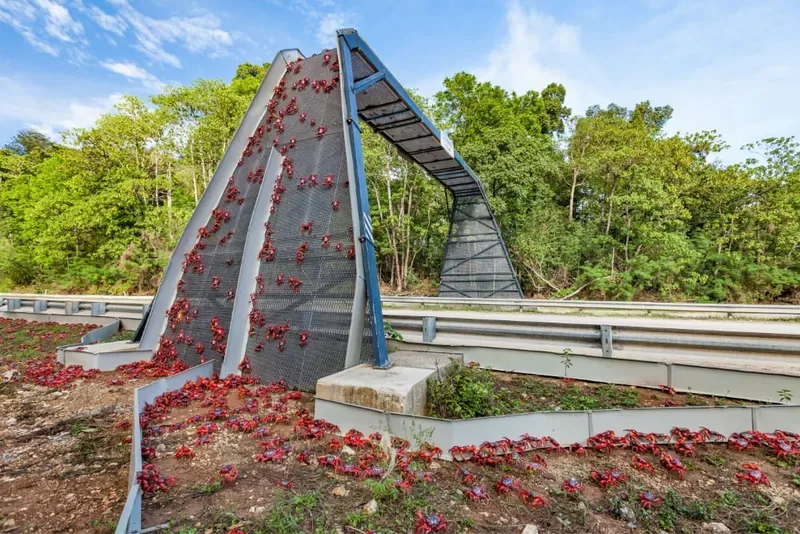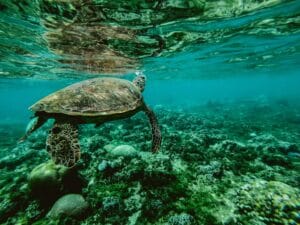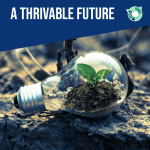The Roadkill Problem: A Threat to Biodiversity
Human infrastructure poses significant risks to biodiversity and the creation of Strong Sustainability. This infrastructure creates alien environments that most animals cannot comprehend. The biggest infrastructure threat to wildlife is roads, which affect approximately 20% of the total land area in the United States (Federal Highway Administration, n.d.). Globally, they cover 60 million km, 160 times the distance to the moon (Groch, 2021). Roads often fragment wild habitat, leading to necessary animal movements across roads (Mulero-Pazmany, 2022). This leads to large numbers of roadkill and reducing roadkill remains a significant issue for biodiversity.
Animals attempt to cross roads for a variety of reasons, particularly to find food, migrate, and find mates and new habitats (Defenders of Wildlife, 2019). But this often ends up as a car vs. animal scenario, in which the vehicle often wins. While little attention goes to numbers, approximately 10 million animals die on Australian roads every year (Bender & Coulson, 2024). In a country already grappling with the worst extinction rate on the planet, immediate action is critical for the survival of species and reducing roadkill rates (ACF, 2023).

Source: Road Sense Australia
Why Roads Disrupt Wildlife Movement and Habitat Integrity
Roads fragment habitats, preventing animals from obtaining the high quality food they desire or finding adequate shelter for sleeping or breeding (Mulero-Pazmany, 2022). Unfortunately, ever increasing urbanisation and habitat encroachment are reducing habitat sizes and forcing animals to risk crossing roads to find a more suitable habitat. This then leads to a drop in biodiversity and edge effects. Edge effects are where two types of habitats meet, resulting in altered dynamics of plant and animal life, common along roadsides (Willmer et.al., 2022). For example the edge of a forest bordering on a cleared area will have increased sunlight and a more open canopy, creating greater risks for prey animals and reducing the habitat quality. The same is true for roadsides cutting through ecosystems.
Edge effects can also produce more abundant food sources, an example of which is grass growing on the sides of roads (Khamcha, et.al., 2018). A result of the opened canopy and reduced biodiversity, less predators and competition means the grass has greater ability to grow. Unfortunately, this also attracts animals to the road, where a vehicular strike is likely. The carcasses that then lie on the road attract scavengers, further increasing the potential roadkill toll. Entire populations have gone extinct owing to vehicle interactions (Schilthuizen, 2022), highlighting the necessity of reducing roadkill.
Wildlife Crossings: Engineering Solutions That Save Lives
Reducing the numbers of animals killed on roads is a Complex Wicked Problem. It is not a problem that has an easy solution. Most humans want to do something about the staggering roadkill toll, but do not want to give up the ease of travelling on roads. Unlike humans, animals do not perceive roads a helpful. To animals, they are barriers, obstructions through their habitat, disrupting their natural routine.
Animals react differently to vehicle threats. Some will freeze, some will run in circles, unsure of where to go, and some will try to attack the threat. All of these reactions often have the same result. The sight of roadkill lining the sides of roads is a tragic but common one. The solution to reducing roadkill, therefore, must come from humans. But while many mediations have floated over the years, no sure-fire solution has yet arisen.
Fences, while effective in blocking animals from accessing the road, are controversial as they are expensive and create greater fragmentation that impacts the biodiversity of populations and ecosystems (The Conversation, 2025). They are costly and require a lot of maintenance. Fences need to stretch far down roadsides to have any effect in reducing roadkill numbers.
Auditory deterrents have also been trialled for reducing roadkill tallies to scare animals from roadsides. They emit a loud noise designed to scare animals from approaching the road. Auditory deterrents have had varying levels of success across the globe. In Europe, they appear to have a greater effect, but Australian and North American wildlife appear indifferent. Infrastructure historically has had a human first approach with attitudes shifting in recent years. Infrastructure designed to help wildlife must target specific species. Whether they are arboreal, nocturnal, small or tall, each species has different habitat requirements and different designs must reflect this to ensure they are effective.
Designing Infrastructure with Ecology in Mind
The use of deterrents to prevent animals from venturing onto roads must be made with a target species in mind. What works for one species will not work for another species. For example, fences have show effectiveness in deterring smaller animals. But fences will often not work for kangaroos, as they can easily traverse them. Research has found that wide barriers can be more effective than tall ones across a greater range of species. Animals such as frogs and cicadas can call much louder and at higher frequencies than available auditory deterrents, limiting their effectiveness against animals such as kangaroos (Groch, 2021).
It appears that the most effective strategy for the widest range of species is to change the attitudes of humans to be more accepting of sharing the roads with wildlife. Humans often ignore wildlife road signs, drive at excessive speeds, and don’t pay attention to their surroundings, making accidents inevitable. Should drivers stay more vigilant in roadkill hotspots, particularly around dawn and dusk, and drive at slower speeds, reducing roadkill numbers could be significantly easier (Lester, 2015).
Success Stories from Around the World
A population of Mountain Lions in the US state of Florida was slowly being decimated by approximately 10% a year. This was mostly through interactions with vehicles. With only approximately 20 left during the 1970s, the government began designing and constructing animal crossings, allowing the animals to pass underneath, avoiding the road. The Mountain Lions have now bounced back to healthy population levels (Groch, 2021).
Many unique infrastructure designs have helped specific animals. Love tunnels built in the Victorian Highlands aid pygmy possums in their pursuit to find mates by avoiding the Great Alpine Road (SBS, 2018). Special overpasses assist Red Crabs in their annual migration across Christmas Island (Christmas Island National Park, 2025), and rope bridges in Far North Queensland help canopy-living gliders reach the other side of the road. Slow-moving turtles are assisted by turtle tunnels under roads while preventing predator access (WWF, 2024). Each of these techniques has resulted in lowered rates of roadkill in the areas of installation.

Source: Christmas Island National Park, 2025
Underpasses built using storm drains in Brisbane, Queensland, were readily taken up by smaller animals to cross a highway. However, Koalas refused to use these tunnels. After research was done, it was found that Koalas were hesitant to get their feet wet in the drain. To remedy this, wooden blocks were placed within the tunnel to allow the Koalas a dry passage. They now readily use the tunnel.
Building a Future Where Roads and Wildlife Can Coexist
Roads are a significant issue for biodiversity and connectivity, particularly in areas of high traffic. While making human lives easier, they make the life, and even survival, of wildlife difficult. The best way to prevent the death of wildlife on our roads is to improve the driving attitudes of humans. This way, they will pay more attention and be able to avoid wildlife when driving at reduced speeds. Humans and wildlife need to find ways to peacefully coexist, as is the thrivable way.
Roads are, unfortunately, here to stay. Therefore, solutions must be produced to reduce the number of animals killed on our roads every day. Tackling deforestation can also have an impact on the number of animals killed on roads. Should animals have a suitably sized habitat, they will be less likely to traverse roads. This will reduce the level of danger roads pose. Unfortunately, while deforestation only takes minutes, it takes decades to regrow ecosystems. A combination of these solutions, therefore, can be used to create a peaceful coexistence.
Conclusion and Call to Action
Roads make up a large portion of the Earth’s land surface and heavily contribute to biodiversity loss. Roads cause the fragmentation of habitats, forcing animals to attempt to cross the road. This fragmentation often results in high animal mortality rates and creates edge effects, luring animals to roadsides to graze. Roadkill on the sides of roads also lures scavengers, who are then also at risk. If a wider variety of preventative measures were taken, such as overpasses, underpasses, and fences, in conjunction with increased driver awareness, roadkill numbers could be significantly reduced.
While these solutions are known to have a degree of success, each has its own drawbacks. Each is too local to have large-scale effects, but it works well in its specific areas. No clear-cut solution exists, and there is no solution that will work effectively in all areas. Animals need to be able to move freely around their habitat to breed, as well as maintain genetic diversity and habitat integrity. Humans must be more accommodating of this need by slowing down in roadkill hotspots and staying vigilant when driving.
Campaigning councils and governments to act in roadkill hotspots can create change (ABC, 2025). Petitions such as this by the RACT (2022), call on drivers to reduce speed and look out for wildlife. Other campaigns by Environment America (Jackman, 2025) and the British Deer Society (British Deer Society, n.d.) work towards changing the public perspective, raising money for signs and awareness activities. Contribute to campaings such as these to make a difference today.
Achieving THRIVE goals
Reducing roadkill on our roads marks progress towards the United Nations’ Sustainable Development Goals (SDGs). SDG15: Life On Land highlights the barriers that wild animals face in their daily lives, including reduced biodiversity and habitat fragmentation. SDG9: Industry, Innovation and Infrastructure promotes the use of sustainable infrastructure. Examples of sustainable infrastructure include the use of love tunnels, overpasses, underpasses, and fences. The 12 Foundational Focus Factors (FFFs), from THRIVE, highlight the shortcomings of these SDGs and move beyond sustainability, into thrivability. Strong Sustainability is a key feature of thrivability and protecting wildlife. Reducing the human impact on the environment highlights the Complex Wicked Problem of animal and human interactions on our roads. Integral Thinking, or thinking with wildlife in mind, is required to produce a solution to this issue.
A Thrivable Framework
THRIVE, a not-for-profit environmental organisation, promotes the move beyond sustainability, to thrivability. To a world where humans and nature peacefully coexist and both thrive. THRIVE works towards solutions to many of the world’s problems through various projects, articles, and public awareness campaigns. Interested parties can join webinars and watch presentations. Whitepapers detail many of the issues facing the world, offering new insights, while workshops deliver interactive strategies for combating issues. Sign up to the newletter to hear about the latest articles and join the movement.























